
Back to Blogs
Discover
Discover the Story of Saint Edmund
Saint Edmund was the original Patron Saint of England (before George).
Who was Saint Edmund?
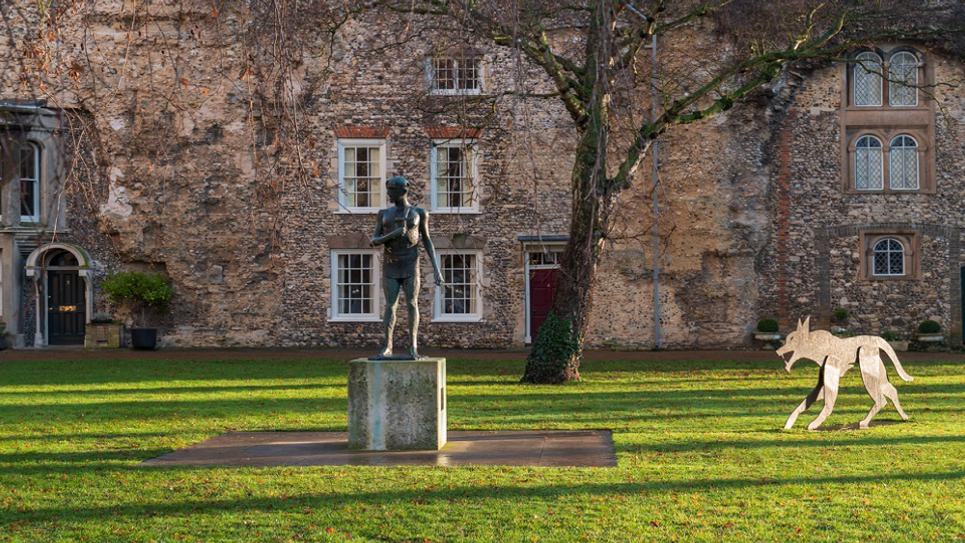
Bury St Edmunds takes its name from King Edmund, the original Patron Saint of England and King of East Anglia, whose shrine at the Abbey of St Edmund was once one of the most famous and wealthy pilgrimage sites in England.
The story of St Edmund, who ruled East Anglia from AD 855 to 869 and was most likely crowned on Christmas Day, tells of the brave King Edmund, thought to have been born in 841, and who was killed by Danish invaders on 20 November 869 after refusing to renounce his Christianity.
A wolf is a central figure of his story. The story goes that after being tied to a tree and shot full of arrows he was then beheaded.
The king's body was found but his head was missing.
His supporters heard a wolf call to them and they found him guarding the king's head, which was then reunited with his body and body and head fused back together. This was the first of many miracles.
Beodericsworth
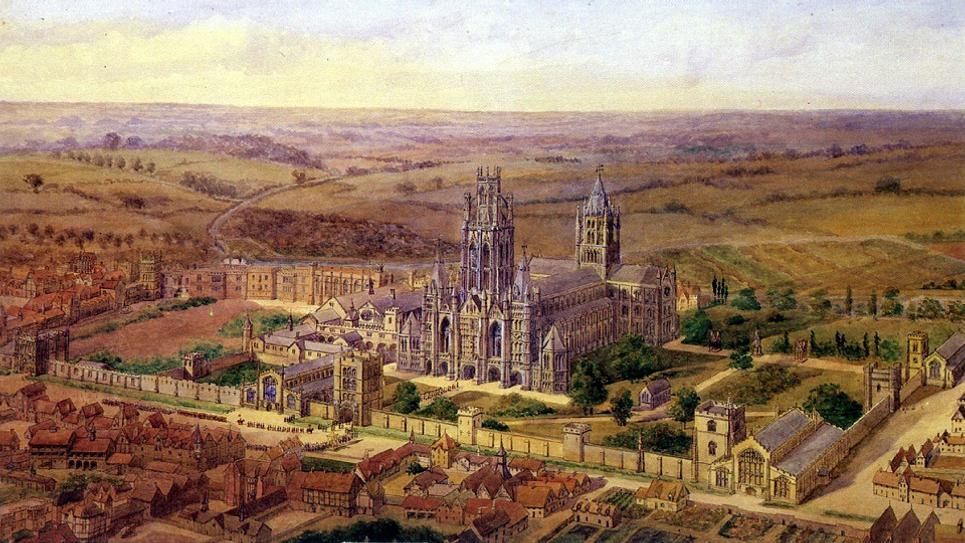
In 903 the remains of St Edmund, the original the Patron Saint of England, were moved to the Anglo-Saxon settlement of Beodericsworth (later known as Bury St Edmunds) where the site had already been in religious use for nearly three centuries.
St Edmund’s body was moved to London in 1010 for safe keeping when The Danes were again marauding through East Anglia but three years later his body was returned to Beodericsworth.
In 1020, King Cnut had a stone church built for Edmund's body and the first abbots arrived. This was the beginning of the Abbey of St Edmund and it became a site of great pilgrimage as people from all over Europe came to visit St Edmund’s shrine.
When the great Abbey Church was built in 1095 St Edmund’s body was moved there in a silver and gold shrine. The shrine became one of the most famous and wealthy pilgrimage locations in England. For centuries the shrine was visited by various kings of England, many of whom gave generously to the abbey. The last time that Edmund’s body was verified was in 1198 after a fire set the shrine alight.
St Edmund From king to legend - a film by Christian Horsnell
Where is St Edmund?
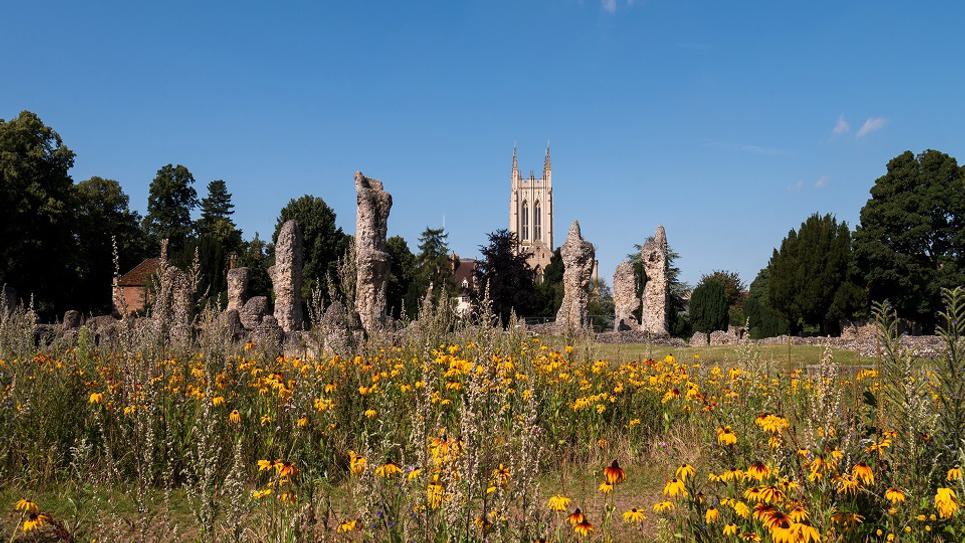
The Abbey was desecrated during Henry VIII's Dissolution of the Monasteries in 1539 and Edmund’s remains are believed to have been removed from the shrine.
The commissioners who dissolved the Abbey in 1539, mentioned nothing about the body, and given St Edmund's royal status it is likely they would have quietly allowed the monks to remove the body from the shrine and relocate it. The whereabouts of St Edmund remains a mystery today.
In his book Edmund – In Search of England’s Lost King, historian Dr Francis Young explores the theory that St Edmund’s remains still lie within the abbey ruins today. In 2013 he came across a document that was previously unknown, from a monk that said Edmund’s body was placed in an iron chest.
In his book Dr Young explains his theory that St Edmund may be buried in the monks’ cemetery which lay beneath the former tennis courts, now the wildflower labyrinth, in the Abbey Gardens and on consecrated ground.
Related Posts


10 Things You May Not Know About St Edmund
Bury St Edmunds takes its name from King Edmund, the…
View More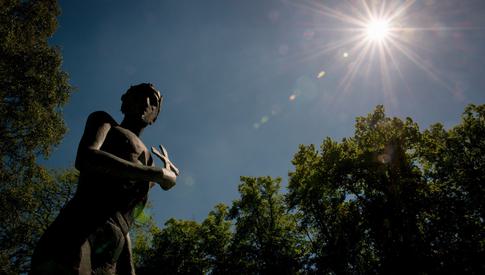

See the Edmund Jewel at Moyse's Hall Musuem
An extremely rare piece of jewellery with possible…
View More
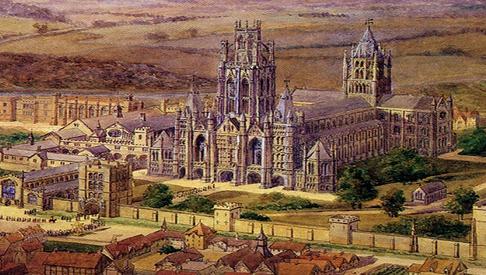
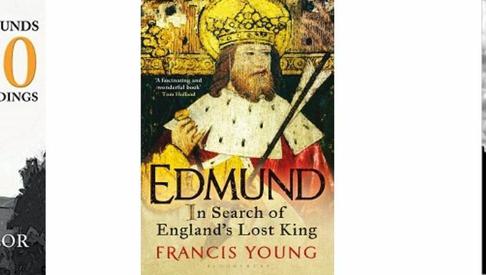
Bury St Edmunds and Beyond in Books
With over 1,000 years of history, there is a lot more…
View MoreRelated Blogs

News
Abbey Gardens in Top 20 Most…
The historic Abbey Gardens in Bury St Edmunds with…

News
Abbey Project Awarded…
The project aims to conserve and protect the ruins;…

News
Cycle the Wolf Way
Winding its way around many of the best bridleways,…
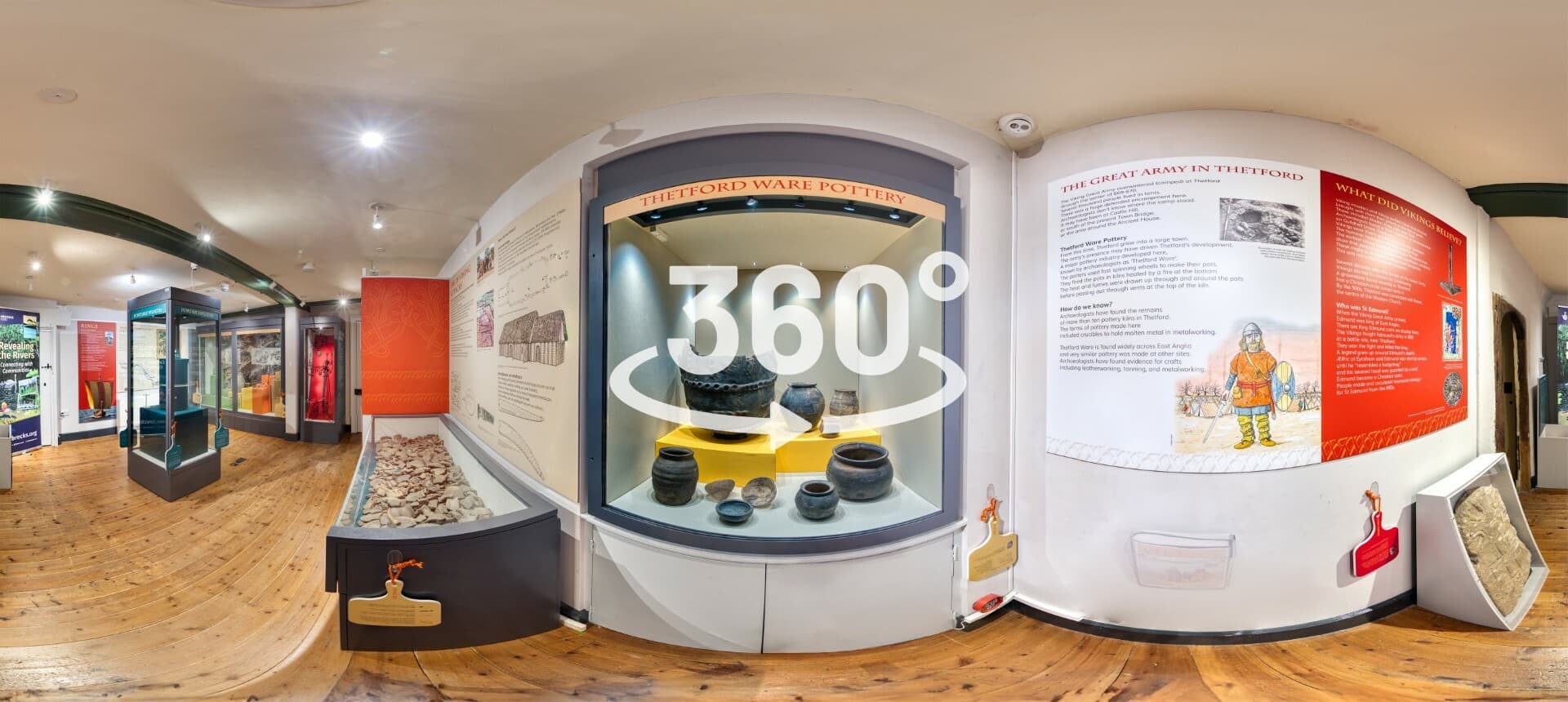
News
360° Degree Vikings
The Brecks Fen Edge and Rivers Landscape Partnership…

News
Abbey Treasures
From Cambridge to Rome, we go in search of the…
Latest news

News
How to Spend Betwixtmas in Bury St Edmunds & Beyond
The post Christmas period is the perfect time to get out and about before the new year kicks in, and you’ll find plenty of activities and places to visit in Bury St Edmunds and beyond.

News
Parents Guide to Pre Christmas Entertainment
It's the school holidays and with Christmas just around the corner we've put toegther a guide on places to take the kids to keep them entertained until Santa visits!

News
Enjoy a Festive Afternoon Tea in 2025
Celebrate the Christmas season with a festive afternoon tea in Bury St Edmunds & Beyond...

News
Festive Winter Walks
Get outside and enjoy the fresh crisp winter air with one of these walks in Bury St Edmunds and Beyond!

News
Bury Tour Guides to launch new tours next year after successful 2025
Bury St Edmunds Tour Guides to Introduce new tours in 2026 and continue the successful Food and Drink Tours!

News
New in Bury St Edmunds For 2026
A sneak peak into new attractions visitors can enjoy in Bury St Edmunds in 2026.

News
Baby It's Cold Outside... Things To Do When the Weather Turns Frosty
Just because the temperature’s dropped doesn’t mean the fun has to! If you’re visiting town during the chillier months, there’s still plenty to see, do, and experience.

News
Places to sit by a roaring fire in Bury St Edmunds & Beyond
Warm up by a roaring fire this winter in Bury St Edmunds & Beyond...

News
Festive Theatre Guide 2025
There’s no better way to summon the magic of the festive season than a trip to the theatre.
